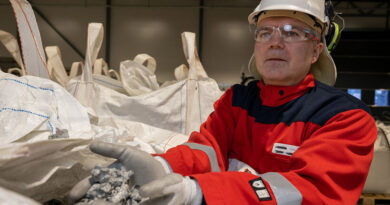Sustainable fuels to reduce glassmaking carbon emissions by 80%
British research organisation Glass Futures published its report for the Department of Business, Energy and Industrial Strategy (BEIS) which answers some of the fundamental questions surrounding low carbon fuels within the UK glass industry, with learnings applicable to the global industry
Glass Futures is building a £54 million 165,000ft2 Global Centre of Glass Excellence in St Helens, UK. It is due for completion in 2023 to pioneer research into decarbonising glass and other industries, has established:
- The use of 100% liquid sustainable biofuels resulted in carbon savings of between 70-80% when compared with high carbon natural gas. The research proved the technical feasibility in major industrial trials for use in both flat and container glass at NSG-Pilkington UK, inventors of the float glass process, and container manufacturer Encirc.
- The potential for replacing natural gas with hydrogen has been demonstrated on an industrial scale and appears promising but the solution varied across the different sub sectors (float, container, etc). Further research is required to understand the effects of hydrogen combustion on glass melting and forming processes, glass quality, Nitrogen Oxide (NOx) emissions and refractory corrosion.
- Some manufacturers are using increasing amounts of electric ‘boost’, with electricity supplying around 20-40% of melting energy. Increasing beyond this amount of boost requires significant changes to furnace design and other barriers exist including uncertainty around the rising cost of energy.
- Alongside a series of pilot scale tests, economic modelling and research into hybrid solutions from present day to 2100 found that payback on net zero investment is possible by 2060, based on retrofitting solutions and given a positive policy framework co-created by industry and government.
While the results of less commercially available and technically unproven options like biofuels and hydrogen were positive, the report concludes that options to decarbonise the industry won’t be restricted to one single solution due to geographic drivers such as localised hydrogen networks and electrical grid capacity.




